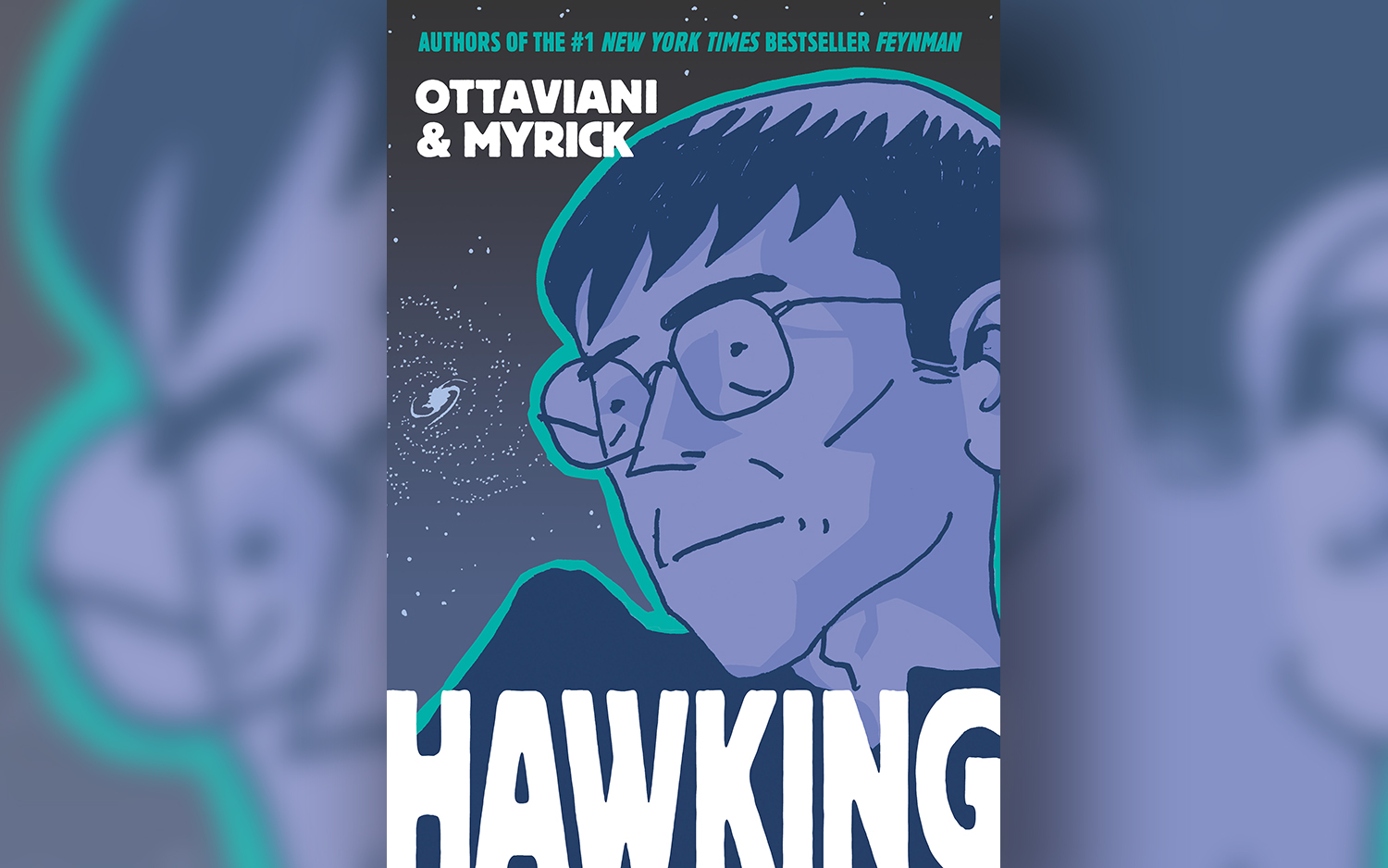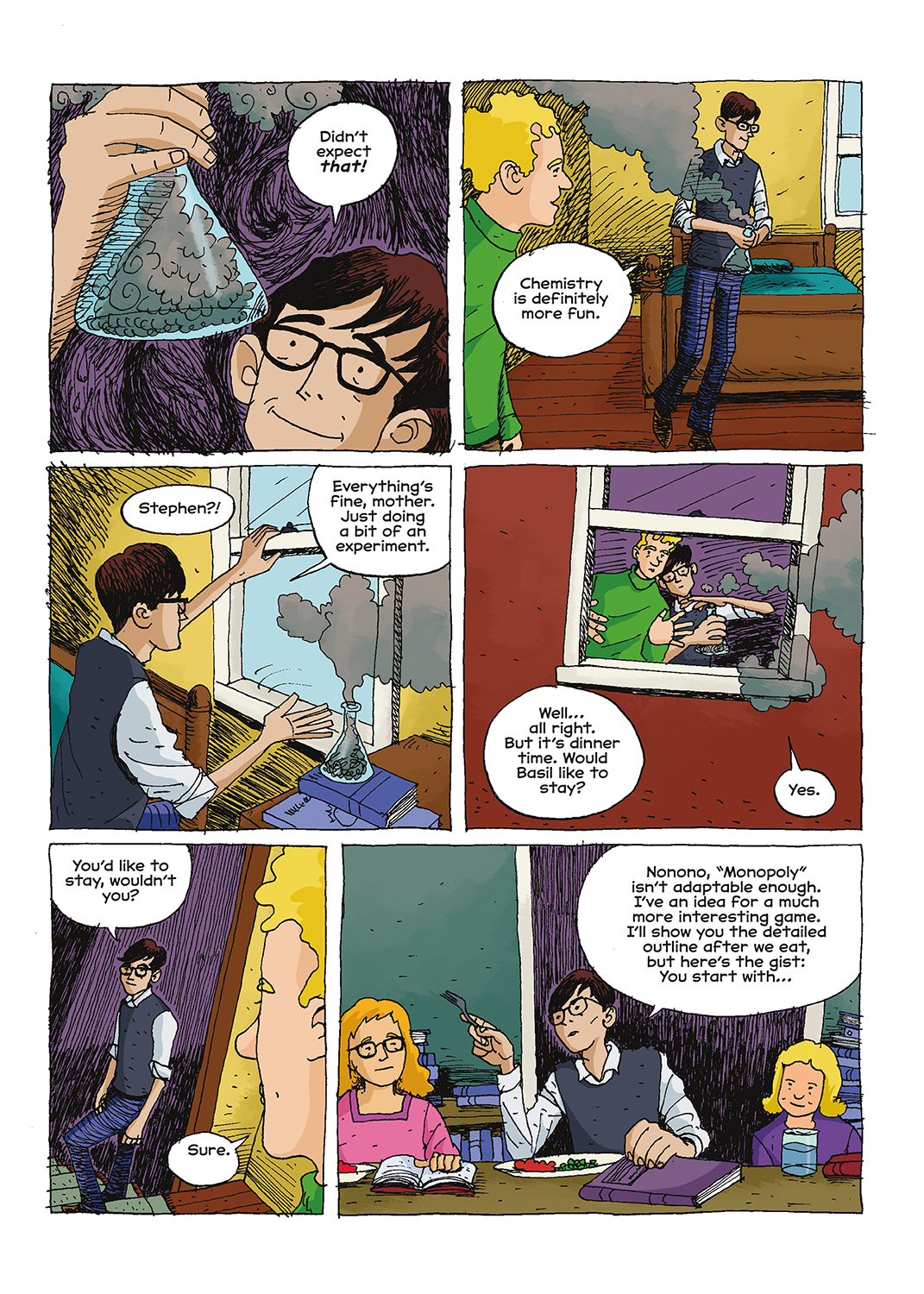New Stephen Hawking Graphic Biography to Reveal the Scientist — and the Man

The late physicist Stephen Hawking left behind a singular legacy in the world of modern physics and cosmology, and a new graphic biography offers a fresh look at his life — public and private — alongside his achievements in physics.
Titled "Hawking," the book is written by Jim Ottaviani and illustrated by Leland Myrick, and today (Sept. 13), Live Science presents an exclusive look at the upcoming release's cover — a strikingly illustrated close-up of Hawking against the backdrop of a distant spiral galaxy — as well as a peek at some of the panels that describe his journey to achieve unparalleled scientific renown.
Ottaviani and Myrick previously collaborated on the graphic biography of quantum physicist Richard Feynman ("Feynman," published by First Second in 2011), which was a New York Times best-seller. Their new collaboration, with a release date of July 2, 2019, follows Hawking from childhood through his emergence as a physics superstar and science celebrity, and also reveals glimpses into his private life away from the media spotlight. [Stephen Hawking: A Physics Icon Remembered in Photos]
The project took shape after Ottaviani and Myrick learned in 2012 that Hawking had enjoyed their graphic treatment of Feynman, Ottaviani told Live Science in an email. A mutual friend invited Ottaviani and Myrick to visit Cambridge and meet with Hawking to talk about collaborating on a graphic biography about him. And when the opportunity was offered, they jumped at the chance to tell Hawking's story in graphic-novel format, Ottaviani said in a statement.
"We didn't get on a plane that same afternoon, but we did start planning our trip — and this book," Ottaviani said.
Hawking, who died on March 14 at the age of 76, was diagnosed when he was only 21 years old with a degenerative nerve disease known as amyotrophic lateral sclerosis (ALS) — Lou Gehrig's disease. Initially, Hawking was told that he would survive for just a few years, but he defied expectations; from a wheelchair and with a computerized "voice," Hawking emerged over the next few decades as one of the greatest scientific minds of the 20th century — and one of its most widely recognized scientists.
This was in part due to Hawking's highly accessible nonfiction writing and his appearances — playing himself — in popular TV shows such as "Star Trek: The Next Generation," "Futurama," "The Simpsons" and "The Big Bang Theory."
Get the world’s most fascinating discoveries delivered straight to your inbox.
Only a handful of scientists can claim public profiles that loom so large they are known by their last names alone — luminaries such as Einstein, Goodall, Feynman "and, of course, Hawking," Ottaviani said in the email. "We're delighted to share Hawking's story — a very human mix of history, comedy and tragedy — in our new graphic novel," he said.
Original article on Live Science.

Mindy Weisberger is a science journalist and author of "Rise of the Zombie Bugs: The Surprising Science of Parasitic Mind-Control" (Hopkins Press). She formerly edited for Scholastic and was a channel editor and senior writer for Live Science. She has reported on general science, covering climate change, paleontology, biology and space. Mindy studied film at Columbia University; prior to LS, she produced, wrote and directed media for the American Museum of Natural History in NYC. Her videos about dinosaurs, astrophysics, biodiversity and evolution appear in museums and science centers worldwide, earning awards such as the CINE Golden Eagle and the Communicator Award of Excellence. Her writing has also appeared in Scientific American, The Washington Post, How It Works Magazine and CNN.



